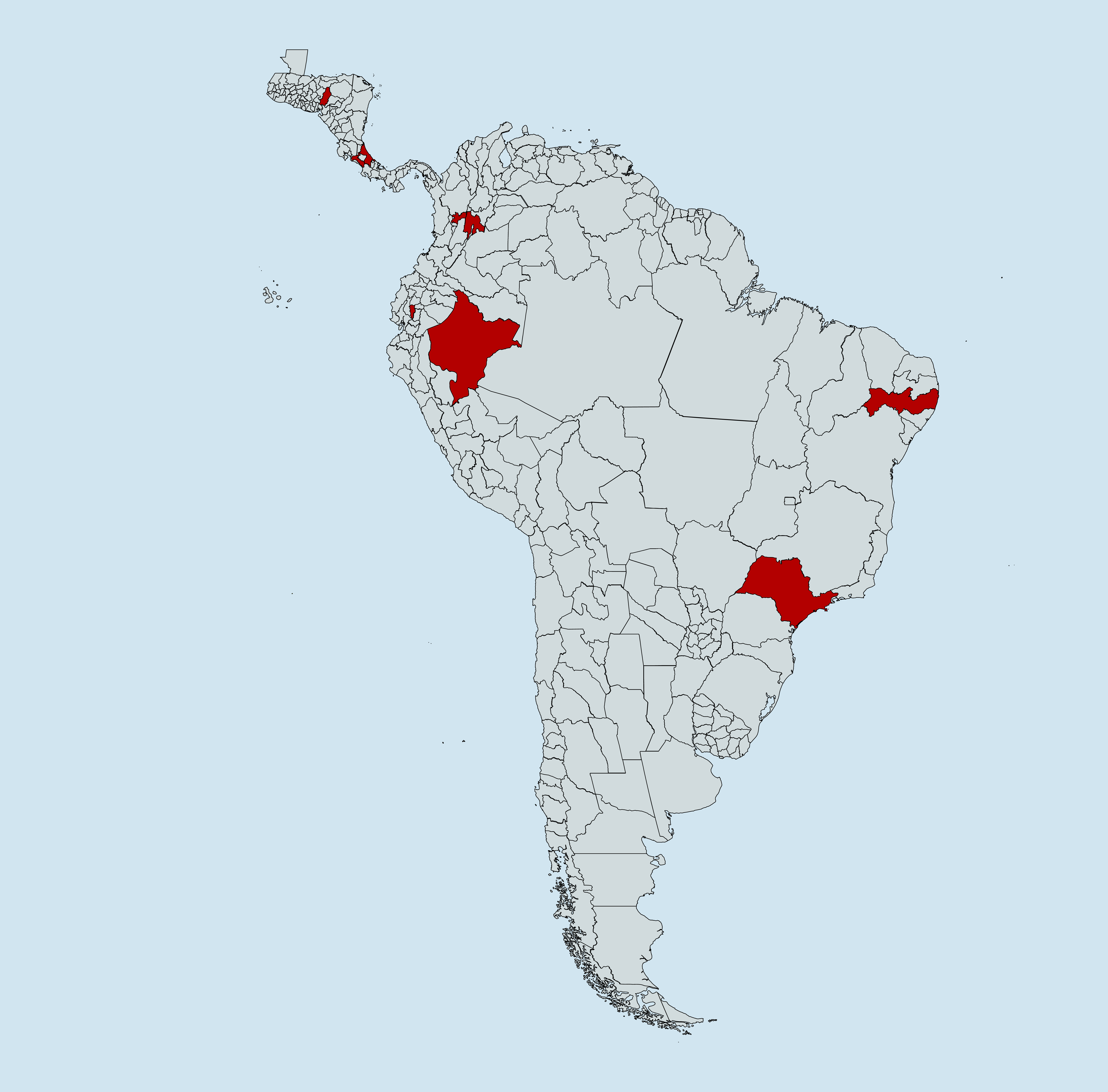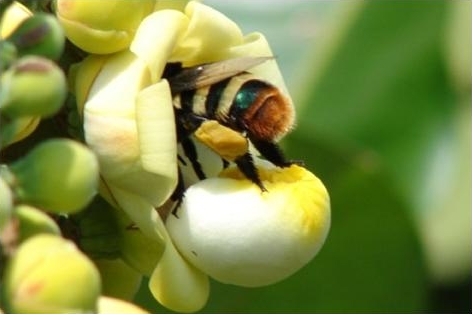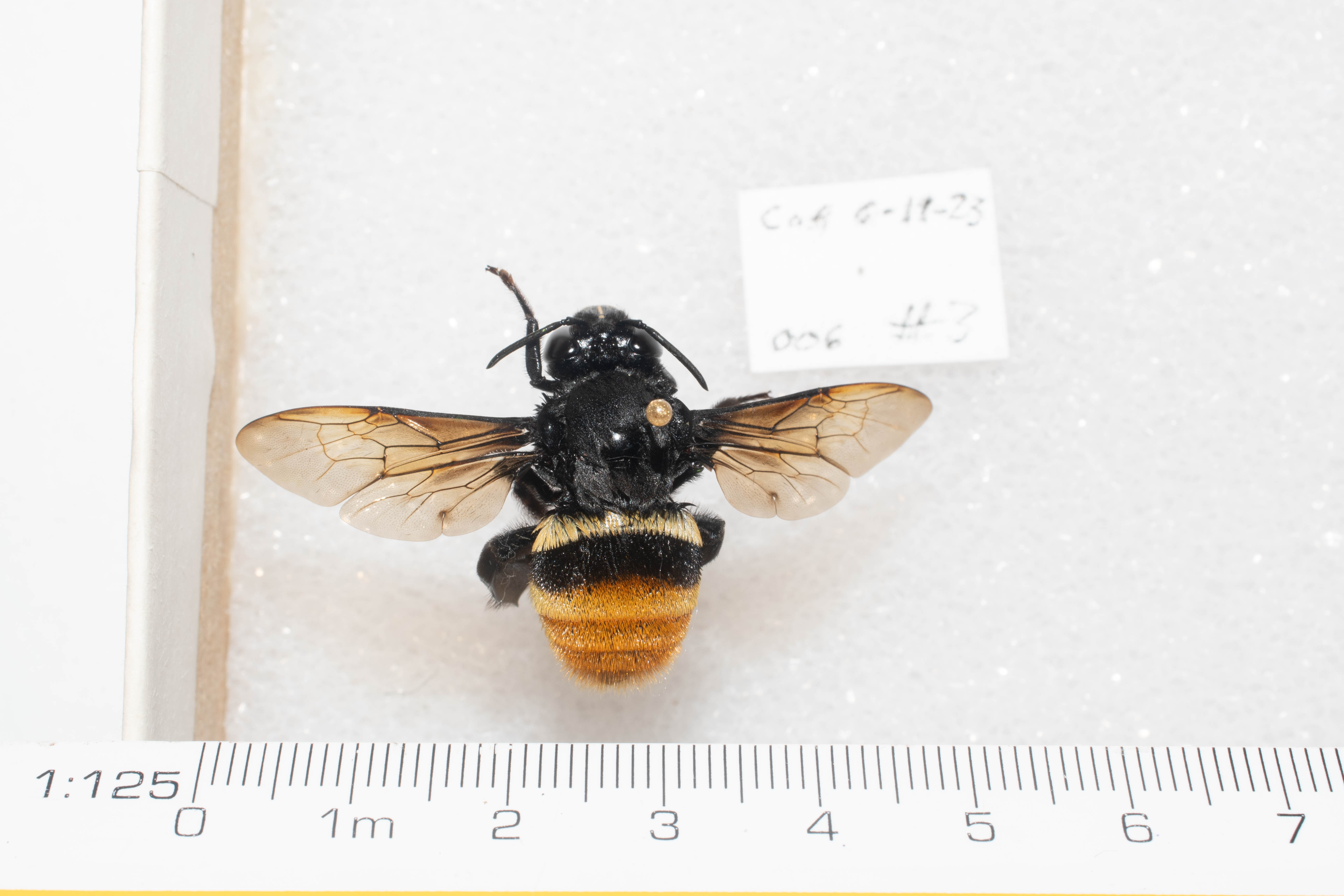|
Meloetyphlus Fuscatus
''Meloetyphlus fuscatus'', the blind blister beetle, is a species of blister beetle in the family Meloidae found in Central and South America. They are Kleptoparasitism, kleptoparasites of Euglossini, orchid bees and are entirely blind as adults. Unique among meloids, females do not lay their eggs near flowers, but rather within their hosts' nests. Description and etymology Description ''M. fuscatus'' is a blind, dull, and robust blister beetle. The eyeless head is larger than is typical for blister beetles and provides more attachment area for Mandible (insect mouthpart), mandibular muscles (this head shape is only observed once elsewhere in Meloidae, in the tribe Horiini). Length ranges from 12 to 17mm; males are typically Sexual dimorphism, larger and have more strongly modified legs than females. Etymology The generic and specific names derive from ''Meloe'' + Greek τῠφλός (''tuphlós'') for blind, and Latin ''fusco'' for dusky. Life history Life cycle Th ... [...More Info...] [...Related Items...] OR: [Wikipedia] [Google] [Baidu] |
Animalia
Animals are multicellular, eukaryotic organisms in the Biology, biological Kingdom (biology), kingdom Animalia (). With few exceptions, animals heterotroph, consume organic material, Cellular respiration#Aerobic respiration, breathe oxygen, have myocytes and are motility, able to move, can reproduce sexually, and grow from a hollow sphere of Cell (biology), cells, the blastula, during embryonic development. Animals form a clade, meaning that they arose from a single common ancestor. Over 1.5 million extant taxon, living animal species have been species description, described, of which around 1.05 million are insects, over 85,000 are molluscs, and around 65,000 are vertebrates. It has been estimated there are as many as 7.77 million animal species on Earth. Animal body lengths range from to . They have complex ecologies and biological interaction, interactions with each other and their environments, forming intricate food webs. The scientific study of animals is known as ... [...More Info...] [...Related Items...] OR: [Wikipedia] [Google] [Baidu] |
Triungulin
A planidium is a specialized form of insect larva seen in the first-instar of a few families of insects that have parasitoidal ways of life. They are usually flattened, highly Sclerotization, sclerotized (hardened), and quite mobile. The function of the planidial stage is to find a host on which the later larval instars may feed, generally until the insect pupates. Etymology The term "planidium" is derived from the Ancient Greek, Greek language πλανής (planis) meaning "wanderer", the same origin of the word ''planet.'' The term planula was similarly derived in reference to the wandering larvae of certain Cnidaria. Accordingly, "planidium" is the general term for such an adaptation, and it is not limited to any particular species or Morphology (biology), morphology. Planidia of different species differ variously from each other in form. The first-instar larva in the beetle family Meloidae has three claws on each foot, and is therefore called a triungulin (plural ''triungul ... [...More Info...] [...Related Items...] OR: [Wikipedia] [Google] [Baidu] |
Eulaema Polychroma
''Eulaema'' is a genus of large-bodied euglossine bees that occur primarily in the Neotropics. They are robust brown or black bees, hairy or velvety, and often striped with yellow or orange, typically resembling bumblebees. They lack metallic coloration as occurs in the related genus ''Eufriesea''. Distribution ''Eulaema'' is found from Rio Grande do Sul (Brazil), Misiones (Argentina) and Paraguay to northern Mexico with occasional strays into the United States. Behavior Like other euglossine bees, male ''Eulaema'' gather and store scents to attract females. Scientists use different mixes of scents to study these bees, including eugenol, cineole, vanillin, skatole and methyl salicylate. However, this list is not exhaustive. After collecting scents, males choose a branch or tree trunk in an area with more open canopy to make their displays. These displays consist of bouts of movement and buzzing before returning to their perch or mating. When they are not foraging and collectin ... [...More Info...] [...Related Items...] OR: [Wikipedia] [Google] [Baidu] |
Eulaema Nigrita
Eulaema nigrita is a species of large-bodied bee in the tribe Euglossini, the orchid bees. It is commonly known as the black orchid bee. It is found from Costa Rica through northern Argentina. The species nests in pre-existing cavities. References nigrita Nigrita () is a city and a municipality in the Serres (regional unit), Serres regional unit, Macedonia (Greece), Macedonia, Greece. Since the 2011 local government reform it is part of the municipality Visaltia, of which it is the seat and a munic ... Hymenoptera of South America Insects described in 1841 Orchid pollinators Taxa named by Amédée Louis Michel le Peletier {{Apinae-stub ... [...More Info...] [...Related Items...] OR: [Wikipedia] [Google] [Baidu] |
Eulaema Mocsaryi
''Eulaema mocsaryi'' is a species of large-bodied bee in the tribe Euglossini, the orchid bees. It was named in honour of the Hungarian entomologist Alexander Mocsáry, curator of the Hungarian Natural History Museum. It is native to forests in parts of tropical South America. Description The head of ''Eulaema mocsaryi'' has a central raised ridge and both the head and thorax are clad in short velvety black hairs. The colour of the head and thorax is mainly black. The legs are black and hairy and the tibial joints of the hind legs are wide and compressed. The dark-coloured abdomen is densely covered with short tawny-yellowish hairs, becoming paler towards the tip of the abdomen. Distribution ''Eulaema mocsaryi'' is native to the forests of Colombia, Surinam and the Amazon basin in Brazil. Ecology ''Eulaema mocsaryi'' has been seen visiting the flowers of '' Solanum toxicarium'' and '' Polygala spectabilis''. The male has a mutualistic relationship with the orchid '' Cattleya e ... [...More Info...] [...Related Items...] OR: [Wikipedia] [Google] [Baidu] |
Eulaema Meriana
''Eulaema meriana'' is a large-bodied bee species in the tribe Euglossini, otherwise known as the orchid bees. The species is a Bee#Solitary and communal bees, solitary bee and is native to tropical Central and South America. The male collects fragrances from orchid flowers, which it stores in hollows in its hind legs. Orchids can be deceptive by mimicking the form of a female and her sex pheromone, thus luring male bees or wasps. Pollination will take place as the males attempt to mate with the Labellum (botany), labellum, or the tip petal of the flower. Male ''E. meriana'' are territorial and have a particular perch on a tree trunk where it displays to attract a female. After mating, the female builds a nest with urn-shaped cells made with mud, feces, and plant resin, and provisions these with nectar and pollen before laying an egg in each. These bees also have complex foraging and wing buzzing behaviors and are part of a mimicry complex. Description ''Eulaema meriana'' resemble ... [...More Info...] [...Related Items...] OR: [Wikipedia] [Google] [Baidu] |
Eulaema Helvola
''Eulaema'' is a genus of large-bodied Euglossini, euglossine bees that occur primarily in the Neotropics. They are robust brown or black bees, hairy or velvety, and often striped with yellow or orange, typically resembling bumblebees. They lack metallic coloration as occurs in the related genus ''Eufriesea''. Distribution ''Eulaema'' is found from Rio Grande do Sul (Brazil), Misiones (Argentina) and Paraguay to northern Mexico with occasional strays into the United States. Behavior Like other euglossine bees, male ''Eulaema'' gather and store scents to attract females. Scientists use different mixes of scents to study these bees, including eugenol, cineole, vanillin, skatole and methyl salicylate. However, this list is not exhaustive. After collecting scents, males choose a branch or tree trunk in an area with more open canopy to make their displays. These displays consist of bouts of movement and buzzing before returning to their perch or mating. When they are not foraging an ... [...More Info...] [...Related Items...] OR: [Wikipedia] [Google] [Baidu] |
Eulaema Cingulata
''Eulaema cingulata'' is a large-bodied black and orange Apinae, corbiculate bee in the genus ''Eulaema''. It is characterized by its size and flashy orange segments of its metastoma. Unlike other Eulaema, E. cingulata has white markings on its face. Specifically, T1 andT3 are black while T2 and T4 through T7 are cream or slightly orange in color. These bees are easily mistaken for Bumblebee, bumblebees (''Bombus'' spp.). However, they are actually members of the Euglossini, or orchid bees. Distribution ''E. cingulata'' can be found in the Neotropical realm, neotropics, extending its range from Mexico to Brazil. They can occur at elevations as high as 2500 m and persist in anthropogenically disturbed habitats. References {{Taxonbar, from=Q1827232 Insects described in 1804 Eulaema, cingulata Orchid pollinators Hymenoptera of South America ... [...More Info...] [...Related Items...] OR: [Wikipedia] [Google] [Baidu] |
Eufriesea Violacea
''Eufriesea'' is a genus of euglossine bees. Like all orchid bees, they are restricted to the Neotropics. All species range from entirely to at least partially metallic (the face and/or tegulae), though much of the body in some species may be brown/black in color and hairy. Distribution ''Eufriesea'' have been found from Texas to central Argentina.Gonzalez VH, Griswold T, Simões M (2017) On the identity of the adventive species of ''Eufriesea'' Cockerell in the USA: systematics and potential distribution of the ''coerulescens'' species group (Hymenoptera, Apidae). Journal of Hymenoptera Research 55: 55-102. https://doi.org/10.3897/jhr.55.12209 ''E. purpurata'' At least one species in this genus, ''Eufriesea purpurata'' from Brazil, has been shown to deliberately collect large quantities of the insecticide DDT without any apparent adverse effects. Individual bees were observed to collect as much as 2 mg, which is equivalent to several percent of the bee's weight. Bees were ... [...More Info...] [...Related Items...] OR: [Wikipedia] [Google] [Baidu] |
Exaerete
''Exaerete'' is a genus of euglossine bees found from Mexico to northern Argentina. Like all orchid bees, they are restricted to the Neotropics. All but one species is metallic green, and they are cleptoparasites in the nests of other euglossines in the genera ''Eufriesea'' and ''Eulaema''. It contains the following species: * ''Exaerete azteca'' Moure, 1964 * '' Exaerete dentata'' (Linnaeus, 1758) * '' Exaerete fallaciosa'' Engel, 2018 * ''Exaerete frontalis ''Exaerete frontalis'' is a kleptoparasite, kleptoparasitic species of euglossine bees. Description Behavior ''Exaerete frontalis'' is a kleptoparasitic species. Females do not build own nests but lay their egg in nests of other large euglos ...'' (Guérin-Méneville, 1845) * '' Exaerete kimseyae'' Oliviera, 2011 * '' Exaerete lepeletieri'' Oliviera & Nemesio, 2003 * '' Exaerete salsai'' Nemesio, 2011 * '' Exaerete smaragdina'' (Guérin-Méneville, 1845) * '' Exaerete tricosa'' Engel & Bembé, 2020 * '' Exaerete troch ... [...More Info...] [...Related Items...] OR: [Wikipedia] [Google] [Baidu] |
Eulaema
''Eulaema'' is a genus of large-bodied euglossine bees that occur primarily in the Neotropics. They are robust brown or black bees, hairy or velvety, and often striped with yellow or orange, typically resembling bumblebees. They lack metallic coloration as occurs in the related genus '' Eufriesea''. Distribution ''Eulaema'' is found from Rio Grande do Sul (Brazil), Misiones (Argentina) and Paraguay to northern Mexico with occasional strays into the United States. Behavior Like other euglossine bees, male ''Eulaema'' gather and store scents to attract females. Scientists use different mixes of scents to study these bees, including eugenol, cineole, vanillin, skatole and methyl salicylate Methyl salicylate (oil of wintergreen or wintergreen oil) is an organic compound with the formula C8H8O3. It is the methyl ester of salicylic acid. It is a colorless, viscous liquid with a sweet, fruity odor reminiscent of root beer (in which it .... However, this list is not exhaustive ... [...More Info...] [...Related Items...] OR: [Wikipedia] [Google] [Baidu] |








